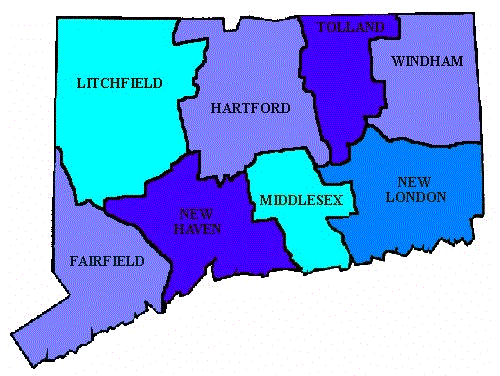The steady drumbeat for “regionalism” in Connecticut rests on the premise that if government costs too much — if the people are overtaxed and underserved — the best solution is either more government or conscripting successful municipalities to bolster those which are failing.
The conversation about regionalism generally revolves around two flawed ideas: re-establishing county government, or merging services between struggling cities and their surrounding suburbs.
First, lets start with the idea of returning to county governments: it sounds nice, but really its just one more black hole of tax dollars and another bureaucratic hurdle for businesses and residents.
Despite its considerable tax burden, Connecticut actually has fewer government entities than most other states.
According to a report by Governing Magazine, Connecticut has only 5 general purpose governments — the tenth lowest in the nation. If you include school and special districts, Connecticut has 643 total government bodies, 38 percent fewer than the average state.
And yet Connecticut’s taxes are well above average.
And county government doesn’t solve fiscal problems. Sure, some states which are doing well have county governments, but some which are doing poorly have county governments, too.
Generally, the only states in the country which consistently rank worse than Connecticut for fiscal health are Illinois and New Jersey. Plenty of county government there, not much to show for it.
The other argument for regionalization is that it could help bolster Connecticut’s struggling areas — usually cities — by sharing costs with more fiscally stable towns.
This is akin to a debt-ridden, out-of-work friend asking you to co-sign a loan so he can get a new car. The co-signer takes on the risk, but doesn’t get to drive the car.
It’s a hard sell, especially for towns surrounding Connecticut’s cities. Some of those municipalities are also struggling, despite the appearance of affluence.
Municipalities do enter into shared service arrangements with other towns, however, provided its is mutually beneficial, and that is the real crux of the regionalism argument: whether or not sharing services and costs is voluntary.
In 2016, a bill which would have forced municipalities into county health districts was leaked, terrifying local leaders. The cost to towns would have been huge, forcing them to contribute 1.5 percent of their total budgets to the health district in order to receive funding and grants from Connecticut’s Department of Public Health.
Manchester, for instance, would have been forced into a health district with Hartford. Its health department budget would have gone from $779,377 per year to $3.3 million in order to pay its fair share.
The bill was eventually scuttled, but the interesting part of it was that a number of municipalities were already part of health districts, like the Torrington Area Health District in which 18 municipalities share services and costs.
Forced arrangements which are not mutually beneficial would place one municipality’s interests above another (or several others).
And don’t forget about Connecticut’s Regional Councils of Government!
While not well-known, Connecticut’s COGs do much of the work previously done by counties before county government ended in 1959.
There are nine COGs in Connecticut which work collaboratively with town officials to identify shared problems and regional goals related to transportation, economic development and the environment. They can then work with each other and the state government to reach those goals.
So Connecticut already has what many regionalism proponents want — shared services and regional decision-making entities. This raises the question, “Why the renewed push for regionalism?”
The answer may be in how Connecticut counties and regions would be effectuated and to whose benefit.
The argument for regionalism is really more of an argument for forced bailouts, rather than creating more cost effective government through shared services and common goals.


Robert Guynn
August 4, 2018 @ 9:02 am
ChesProCott Health District is another example of a VOLUNTARY association of towns working for mutual benefit. You will note that Waterbury ins’t in that mix…for good reason!
John handu
October 22, 2019 @ 7:12 am
You complain a lot but offer no solutions for the tax issues. There’s too many layers of local government, having a small town run a police force is batshit crazy and wasteful, especially when they just function as expensive road work traffic controllers